Sixteen private gardens that are close enough to Larry Lederman’s home to permit periodic inspection over the years appear in his new book, Garden Portraits: Experiences of Natural Beauty. We follow him inside enclaves that have been tended for years and even generations. We see the Japanese garden at Pocantico Hills that has been in the family of John D. Rockefeller since 1909. Every one of these gardens casts a different spell. Jazz great Dave Brubeck built himself a little island for his piano. Dance patron Anne Bass enjoyed sweeping views of pastures and meadows. Then there are the felines who have roamed the topiaries of Sleepy Cat Farm. And everywhere are different kinds of maple, blazing in the summer.
“The trees interested me from the beginning. I took portraits of them, individually, in stands, and then within the landscape,” Lederman said to me as he looked back to 1992 when, together with Kitty Hawks, he acquired Hawks Nest, a precariously sloping four-acre property in Chappaqua, N.Y. Looming over him was a white pine of considerable age (probably 150 years) and girth (recently measured at four feet).
A weeping cherry tree came into view as we looped down from an ivy and mint-covered mound hiding a small garage like a green tea cozy. Summer was ending. The swaths of hydrangeas were at their peak, swaying over our heads in welcome as we walked past raised beds of river birches and into the house, on through the kitchen and out to the terrace. From here, the view plunged to a lake-like reservoir edged by a narrow dam that looked as if it was colored with a waxy green crayon by Hawks, a celebrated interior designer.

During these months of unexpected isolation, Hawks Nest provided seasons of consoling beauty to Lederman and Hawks who left New York City shortly after the pandemic began with their two dogs: Lizzy who is elderly and sleeps a lot, and Jackpot who shares Lederman’s interest in trees. The excitable shelter dog once climbed so high up an oak’s crooked limb that the fire department rushed over with ladders and jump cloths.
“I am an observer even in my own garden,” writes Lederman in the introduction to Garden Portraits. “My photographs make permanent records and at the same time try to uncover and express inherent sources of enchantment. What I know is that each day is different and no one day exposes all. Only over time do the gardens unfold in the seasons and does the light become revelatory. My inspiration is the belief that with patience images can succinctly capture essence, plumb the ineffable, touch the wellspring of wonder that birthed gardens to begin with. That is what I see each time and over time.’’
Woodland Garden, Hudson Valley, New York
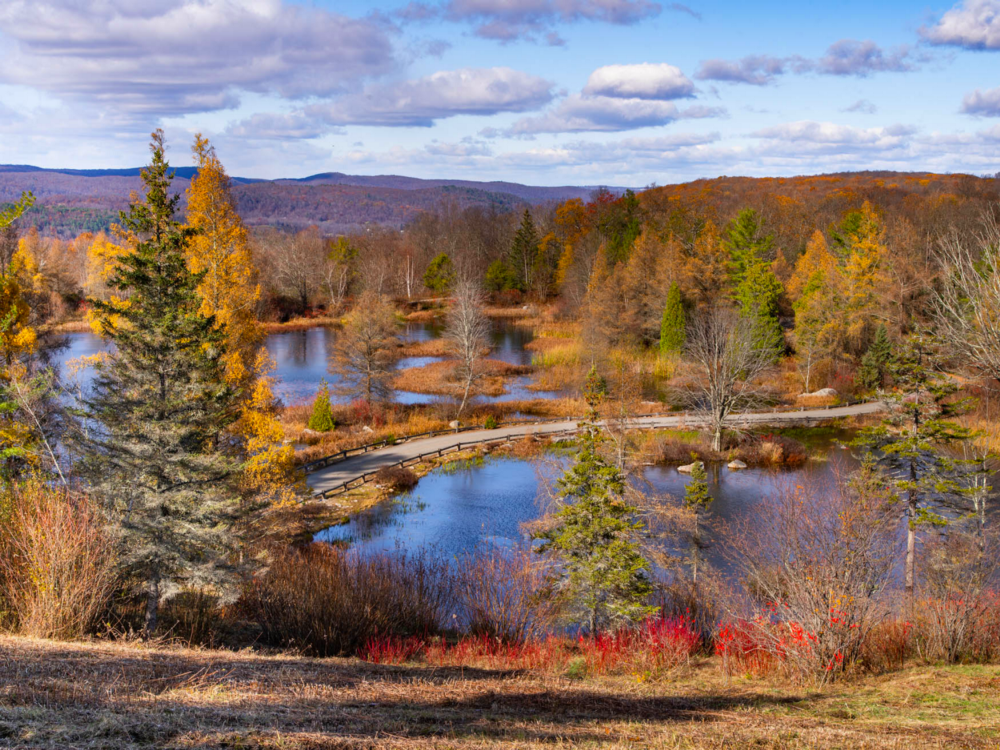
I chose the causeway to photograph because it speaks to the breadth of the garden — over 1200 acres — and the singular devotion to woodland, all native, installed on a north-south axis reflecting its positioning along the Appalachian trail from southern Georgia to Maine. The house was built on the so-called geographic Mason-Dixon line, the area where northern vegetation begins, the midpoint. This garden was created from scratch over 20 years and speaks to a state of mind that is guided by the North Star; no other stars will distract or lead this traveler to take a turn.
Rock Cobble Farm, South Kent, Connecticut
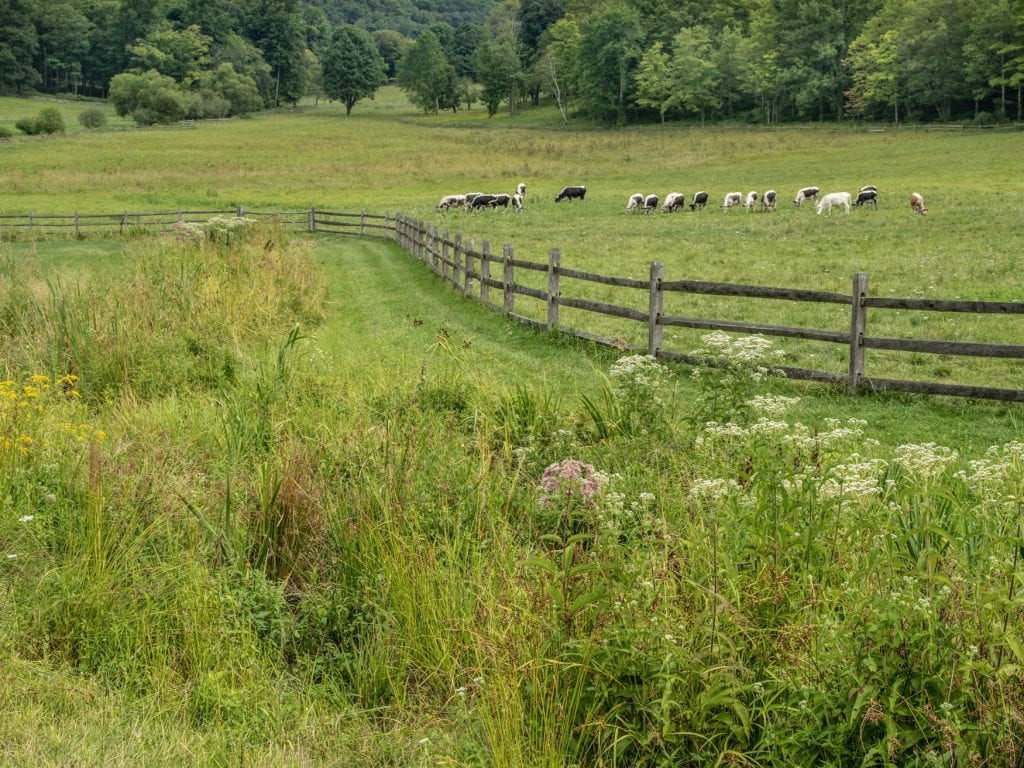
This is Anne Bass’ garden and farm. She loved to see the cattle on the other side of a modest fence. I asked her about that. She could have built an English-style ha-ha, which creates a barrier while preserving an uninterrupted view of the landscape beyond. She shook her head, “It’s a farm.”
For a while she had a restaurant nearby which served farm-fresh food. I took long walks in the meadows, though my favorite was the medicinal herb garden. It was small, a mere cameo, but the rigor and the attention to detail reminded me of Anne, her intensity and good taste and her devotion to dance and her gardens.
The Beckoning Path, Armonk, New York

Ted Nierenberg was the founder of Dansk, an influential product company whose designs were influenced by Scandinavian products. The garden was conceived as a path around a 12-acre lake. The path is covered in moss which was started by pouring a mixture of moss and buttermilk in designated locales.
He built out certain areas to catch the light, and he planted maples and birches for contrast. He took thousands of photographs over 50 years — publishing a good book along the way — and would move plants around based on his pictures. Even after siting a tree to his satisfaction, he might spend decades pruning it to better reveal and enhance its structure.
The Brubeck Garden, Wilton, Connecticut
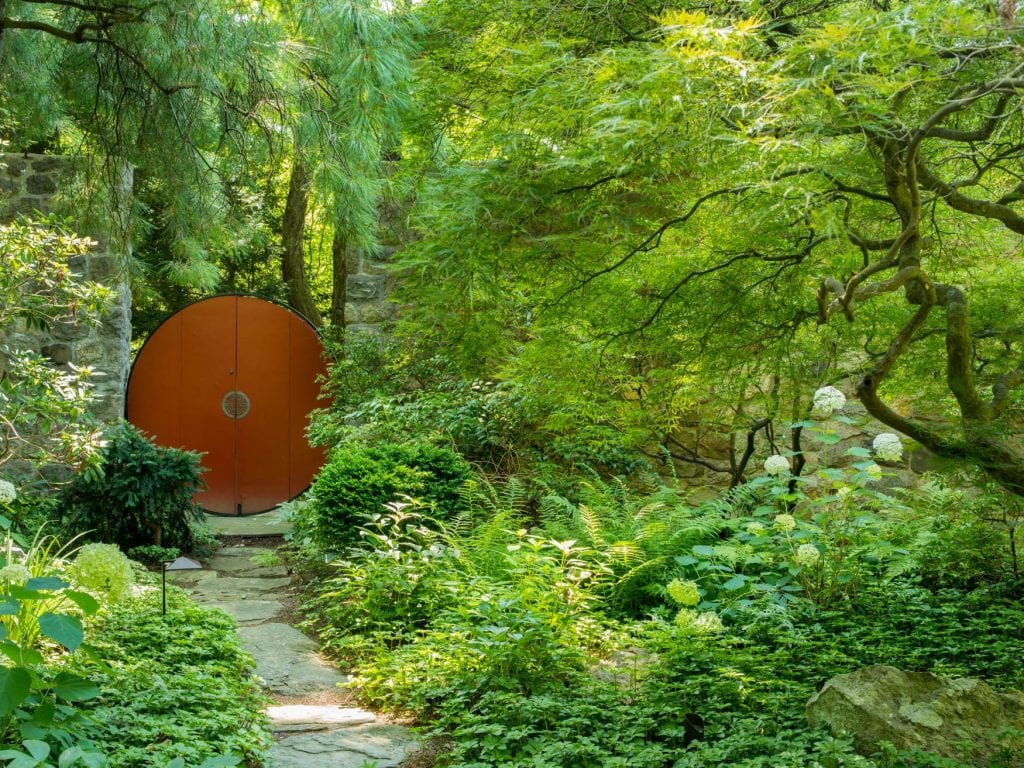
I had never seen a gate like this one. I am told it recalls the Japanese symbol of the sun. The garden beyond features Japanese maples and weeping cherries. Privacy was important to Dave Brubeck when he returned from his concert tours. Like jazz, there is order at the beginning followed by bursts of color that change with the light and mood. The garden was very personal. Brubeck dug out the water courses with his father and then built himself a little one room studio on a pond where he could compose on an electric piano. At any given time the main house contained five kids, two baby grand pianos and an organ. It got noisy.
Cullman Garden, Darien, Connecticut
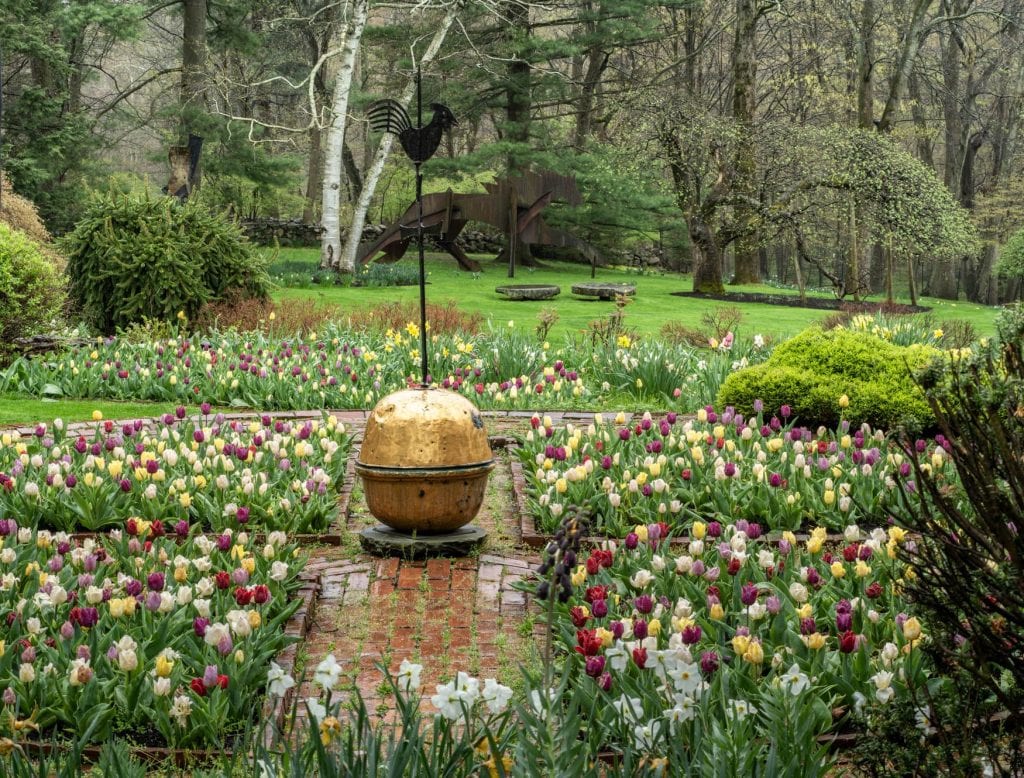
Lewis Cullman was a thoughtful and generous philanthropist who vowed to give away all his money to charity before he died at the age of 100 in 2019. He was the intellect and force behind Chess in the Schools, which changed the lives of many kids who learned to think strategically and to value their intellects. He was central in helping the New York Botanical Garden embrace molecular biology and helped to raise it to its status as a world-class science institution. He lived relatively simply. You could see his entire garden from his living room. He used annuals to give color, tulips, followed by geraniums. The garden was playful. He put out a sign from an English pub on his potting shed and found some metal furniture that looked wobbly, as if crafted by someone under the influence.
Glimcher Garden, Long Island, New York
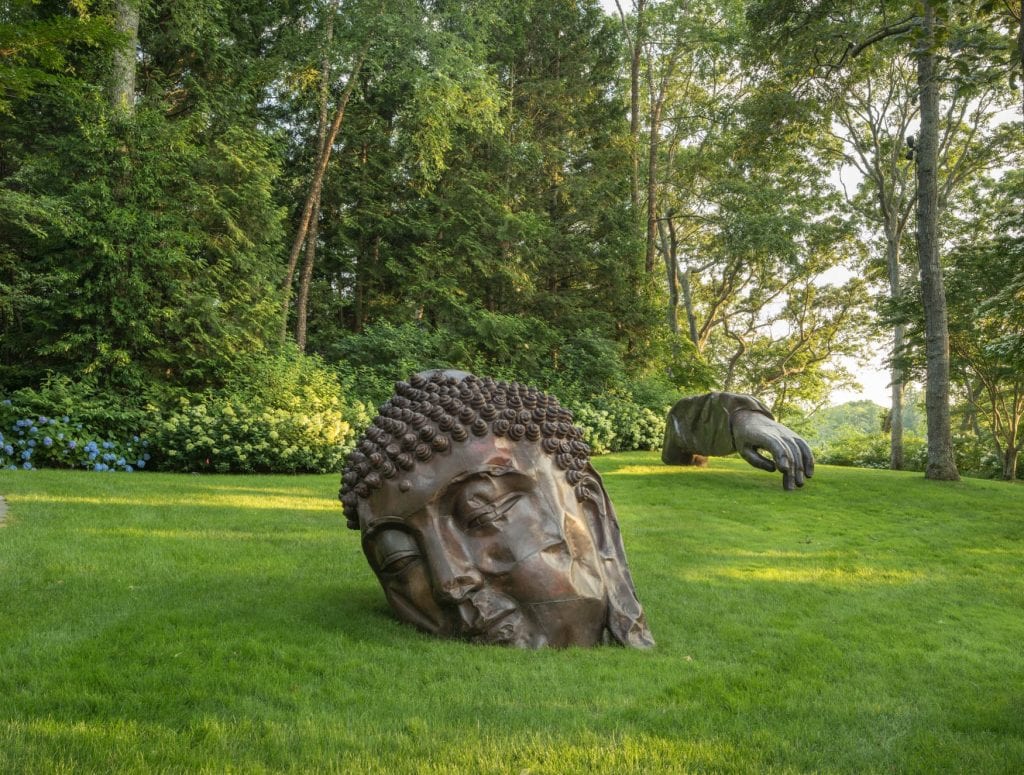
This garden was created by art dealer Arne Glimcher. It is unique. You travel through it, from area to area, as you would any garden, but you feel you are going through a gallery with work by such artists as Louise Nevelson and Henry Moore. There is even a playful little house by Jean Dubuffet that harks back to garden follies of the past. I spent a lot of time circling the sculpture by Chinese artist Zhang Huan. I came to see it as an image of someone swimming hence the photo above.
Rocky Hills, Mount Kisco, New York
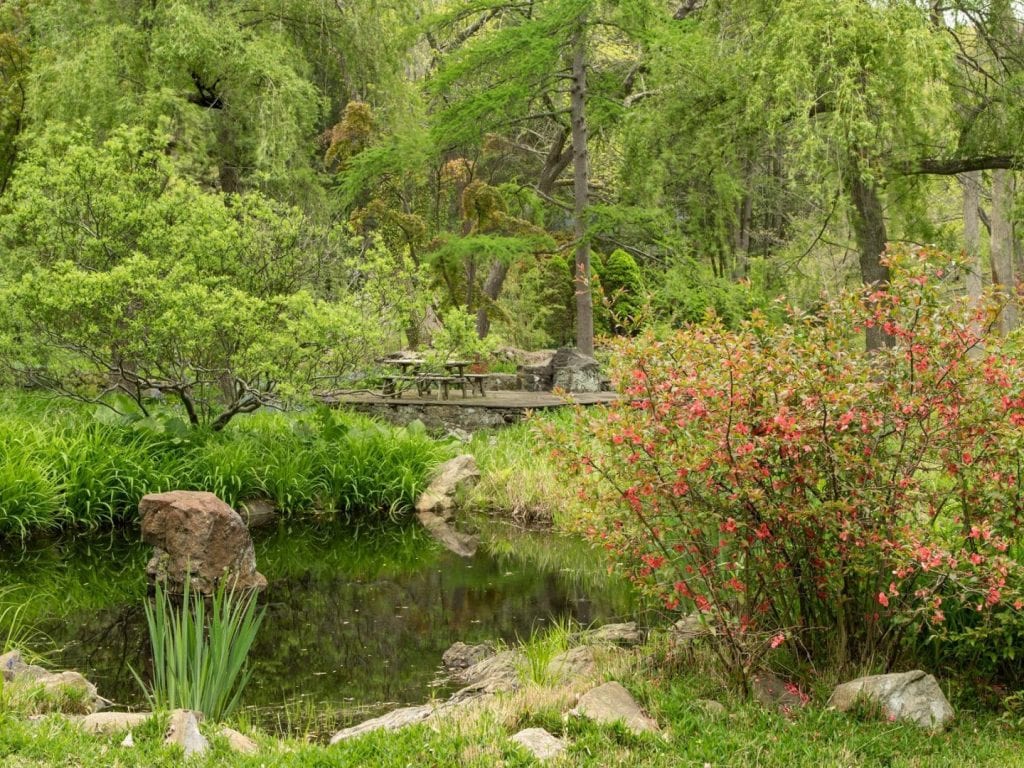
I met Henriette Suhr in her garden when she was in her early nineties. The image that I have of her is of Jessica Tandy in Driving Miss Daisy. She was beautiful and intense and very determined. Both men and women came under her spell. I would have snacks at a table which overlooks a stream and flowering quince. Eating outdoors surrounded by flowers and plants is one of the pleasures of life! The garden has a remarkable collection of maples, some salvaged from a research station closed in 1990 by the Brooklyn Botanic Garden. Sixteen maples are a lot for a relatively small garden, but if you are a collector, there is always room.
Hawks Nest, Chappaqua, New York

The property has many trees with few areas of full sun. The rose garden was achieved with the purchase of an adjacent property. The hilly landscape was terraced and thereby created a passageway to the new property. The Rose Garden is down a few steps from the upper terrace and provides two full blooms in June and September.
Innisfree, Millbrook, New York
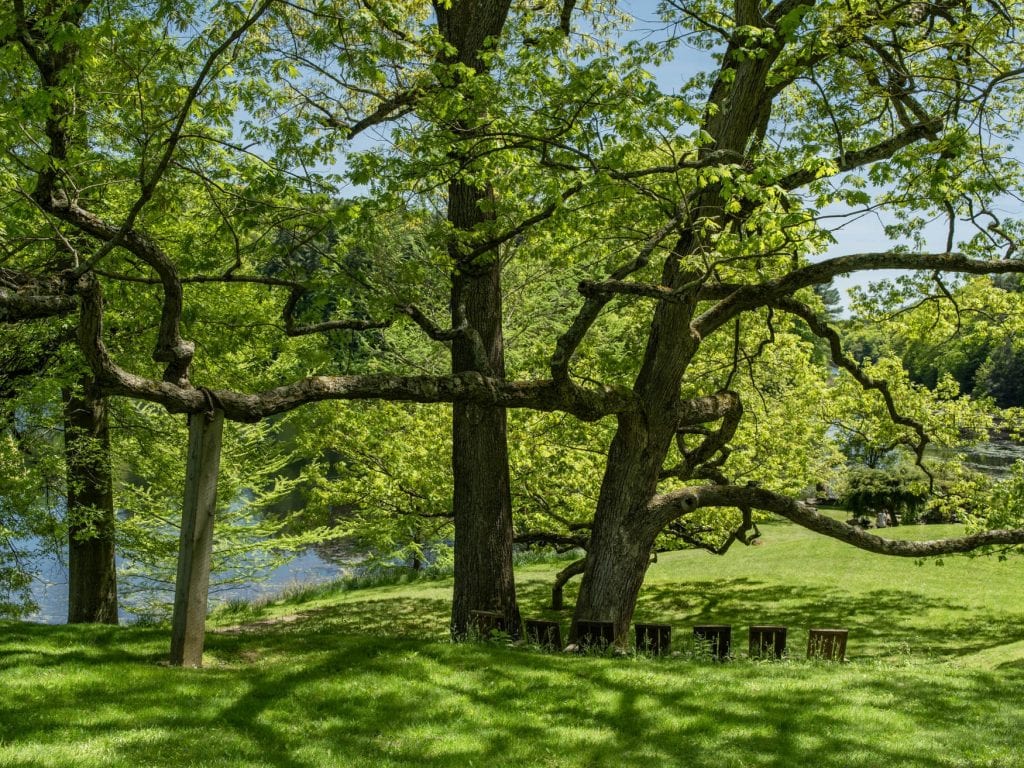
Intense gardening can be ruinous. The Innisfree garden tells the story of the Beck couple, Walter and Marion, who once lived here in a house that no longer exists. When in the 1930s, they were looking for a model for Innisfree they came upon scrolls at the British Museum by an 8th century Chinese poet-painter of his fabled villa on the Wang River. While Innisfree isn’t explicitly Chinese, it was laid out on an extravagant scale: a moss garden required the attention of two gardeners. The maintenance of the property proved to be an overwhelming expense. Had their devoted landscaper not pulled down the house and trimmed back the staff, Innisfree would not have survived.
Iroki, Mount Kisco, New York

Investor Michael Steinhardt has watched his garden grow over fifty years while also doting over a quixotic zoo featuring zebras, flamingos and a turtle the size of a mini-van. His collection of maples is spectacular: some 1,000 distinct types of Japanese maples out of a worldwide estimate of 1,400. The garden contains every type of berry that is hardy in this climate zone, from blueberries to fraises de bois. Steinhardt once said he is aware that he won’t be around when Iroki is at its peak. But he is happy now. I saw him a while ago on a golf cart with his wife Judy. Driving around and enjoying the remarkable creation they have made possible.
Japanese Garden, Kykuit, Pocantico Hills, New York
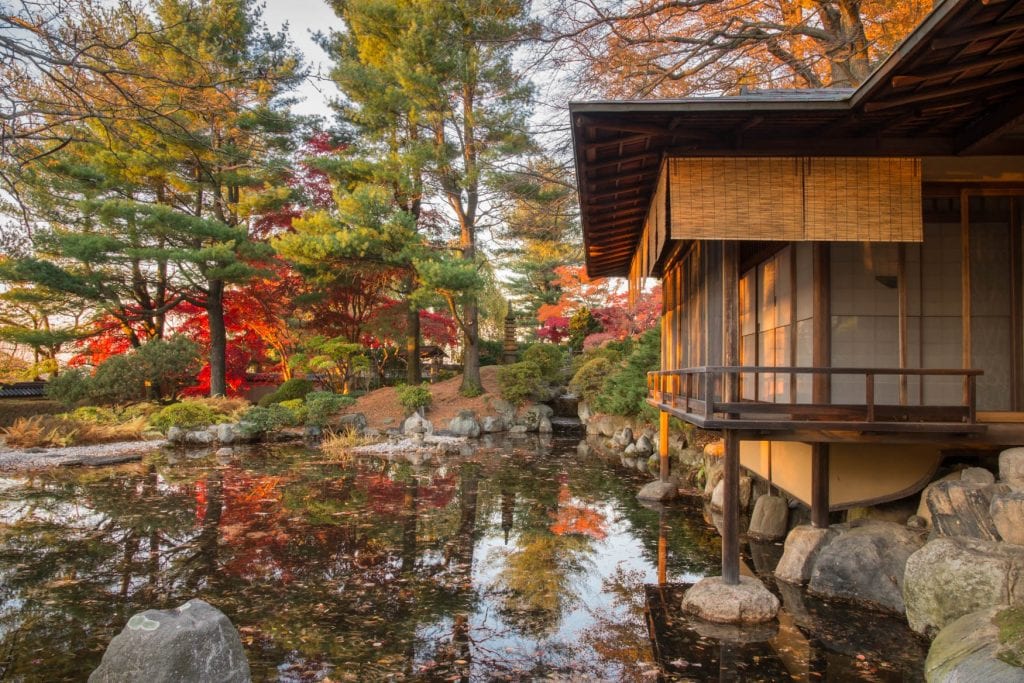
I have been photographing this garden for about five years. I hadn’t seen the private sign when I stumbled through a hedge while I was photographing the rather more extravagant and extroverted Rockefeller manor house and garden. It is a stunning example of the interaction between culture and nature, where the result is exquisite and dynamic. It is also a wonderful example of a garden being handed down through the generations. John D. Rockefeller started the garden in 1909; son Nelson and his sister-in-law Blanchette Rockefeller revitalized it in the 1960s replacing the old tea house with this garden pavilion. But the plants which thrive here are not necessarily the same that do in Japan. That makes it interesting. The garden is now old enough to have broken free and have its own genius.
Sleepy Cat Farm, Greenwich, Connecticut

Some gardens disappear in the winter while others reveal themselves as intricate works of art. Sleepy Cat has great bones. This view is over the Chinese pavilion which seems to float in a small koi pond, the hornbeam hedge and up to the Norman-style guest house. Owner Fred Landman started with six acres in 1994, gradually acquiring neighboring tracts which landscape architect Charles J. Stick evolved into a series of smaller gardens. Spring brings waves of blooms from flowering trees and shrubs, to over 400,000 flowering bulbs, and the occasional cat.


